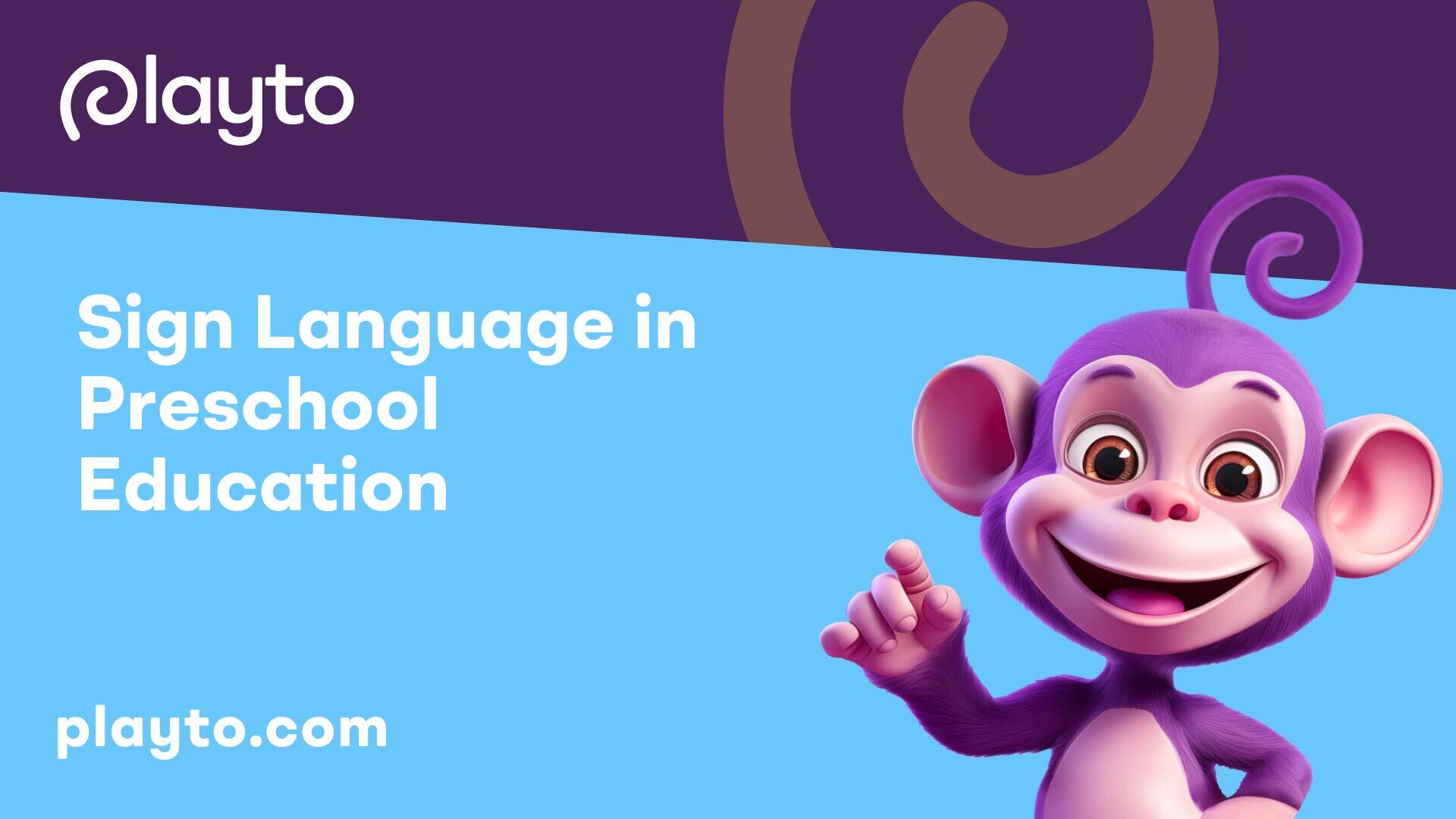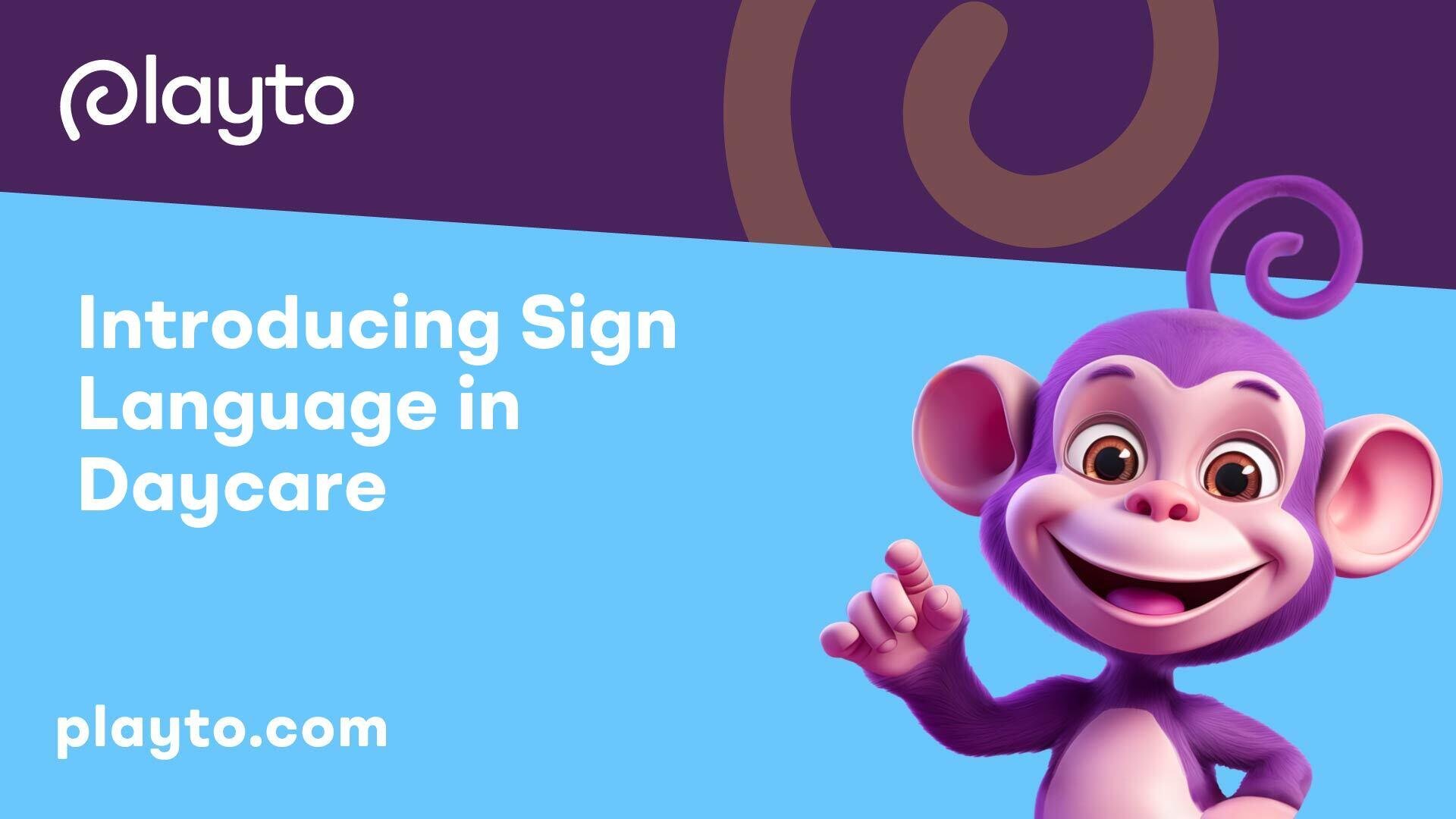
The Benefits of Introducing Sign Language in Daycare
In daycare settings, the introduction of sign language can have significant benefits for both infants and young children. This section explores the advantages of incorporating sign language into daycare environments, focusing on early language development in infants and the cognitive benefits associated with sign language.
Early Language Development in Infants
Research by Dr. Joseph Garcia has revealed that babies as young as 6 months old have the capability to produce basic signs such as 'milk' or 'more'. Introducing sign language in daycare at an early age can support infants in expressing their needs and emotions before they are able to verbalize them. This early exposure to sign language can enhance communication skills, reduce frustration, and strengthen the bond between caregivers and children.
A recent study demonstrated that hearing infants exposed to American Sign Language (ASL) for the first time displayed a preference for ASL over pantomime, indicating a natural inclination towards languages over non-verbal forms of communication. The early introduction of sign language in daycare can lay a strong foundation for language acquisition and foster a supportive learning environment for infants to develop their communication abilities.
Cognitive Benefits of Sign Language
Apart from the language aspect, sign language offers cognitive advantages for children in daycare. By engaging visually and kinesthetically with sign language, children can enhance their cognitive processing skills, memory retention, and overall brain development. The visualization of concepts through sign language can create strong neural connections in the brain, promoting cognitive growth.
The utilization of sign language in daycare can also boost children's understanding of linguistic structures and foster critical thinking skills [2]. As children learn to associate signs with meanings, they improve their language comprehension and analytical abilities. Moreover, the use of sign language encourages children to think creatively and problem-solve, leading to well-rounded cognitive development.
By introducing sign language in daycare settings, caregivers can provide children with a multi-faceted learning experience that not only enhances their language skills but also nurtures their cognitive capabilities. The incorporation of sign language into the daycare curriculum can have positive long-term effects on children's linguistic, cognitive, and overall developmental progress.

Sign Language in Preschool Education
Introducing sign language in daycare can offer a multitude of benefits, particularly in the realms of academic advancement and social and emotional development. Incorporating sign language into the educational curriculum of preschool settings can positively impact children's learning and overall well-being.
Academic Advantages of Sign Language
Studies have shown that children exposed to sign language in preschool curriculum exhibit a significant improvement in receptive English vocabulary. Additionally, these children tend to retain information for a longer period, with significant vocabulary gains sustained through kindergarten. This exposure not only enhances linguistic skills but also contributes to improved reading comprehension, spelling abilities, and ultimately higher IQ levels, fostering confidence and academic success.
Social and Emotional Development
The incorporation of sign language in early childhood development fosters inclusive environments and promotes social interaction among children [2]. It serves as a tool for all children, not just those with communication difficulties, offering a means for self-expression and enhancing vocabulary retention and sentence formation. By providing insights into a child's thoughts and feelings, sign language facilitates improved social skills and relationships.
Moreover, early childhood education for deaf children has begun to integrate American Sign Language (ASL) rhyme and rhythm in classrooms, contributing to phonological awareness development. Research indicates that ASL rhyme and rhythm interventions can enhance engagement behavior and accuracy in recitation skills among young deaf children. This underscores the importance of incorporating sign language not only as a means of communication but also as a tool for enriching social interactions and emotional intelligence in preschool education settings.
By embracing sign language in preschool education, educators and caregivers can create a more inclusive and enriching learning environment that not only nurtures academic growth but also promotes holistic development, including improved social interactions, emotional well-being, and cognitive skills among children.

Incorporating American Sign Language (ASL) in Curriculum
Introducing American Sign Language (ASL) into the daycare curriculum presents a valuable opportunity to enhance communication and learning experiences for children. By integrating ASL into the daily activities and interactions, daycare centers can promote inclusivity and provide a platform for children to develop essential language skills.
Curriculum Development Principles
Successful integration of ASL in the daycare curriculum requires adherence to key development principles that ensure effective teaching and learning processes. These principles encompass designing age-appropriate ASL activities, incorporating visual aids and interactive methods, and fostering a supportive environment that encourages children to engage actively with the language.
In line with these principles, daycare centers should establish clear learning objectives related to ASL proficiency levels and set benchmarks to monitor progress. By structuring the curriculum around these objectives, educators can provide a structured framework for teaching ASL while catering to the individual learning styles and developmental needs of the children.
As emphasized by Procare Software, curriculum development should align with educational values, classroom demographics, and state early learning standards. This alignment ensures that ASL instruction is integrated seamlessly into existing educational frameworks, offering children a holistic learning experience that promotes language acquisition and cultural diversity.
Measurable Outcomes in Daycare
Measuring the outcomes of ASL integration in daycare settings is crucial for evaluating the effectiveness of the curriculum and assessing its impact on children's linguistic development. By instituting measurable processes and outcomes, daycare centers can track progress, identify areas for improvement, and enhance the quality of ASL instruction provided to children.
Feedback mechanisms, shared successes, and learning from mistakes are integral components of generating continuous improvement in ASL education within daycare environments. By collecting feedback from educators, parents, and children, daycare centers can gain valuable insights into the efficacy of their ASL curriculum and make informed adjustments to optimize learning outcomes.
Establishing clear and achievable learning goals aligned with ASL proficiency levels and linguistic milestones further enhances the measurability of outcomes. By defining specific learning objectives and assessing children's progress against these benchmarks, daycare centers can tailor their ASL instruction to meet the diverse needs of their young learners effectively.
As highlighted by Vanco Payments, fostering a culture of trust, open communication, and collaboration among daycare team members is essential for promoting an environment conducive to achieving measurable outcomes. By working together towards shared goals and maintaining transparency in assessment practices, daycare centers can ensure that ASL education remains a valuable component of their curriculum, enhancing children's linguistic proficiency and fostering cross-cultural understanding.
Teamwork and Communication in Daycare Centers
For a daycare center to operate efficiently and provide the best possible care for children, effective teamwork and clear communication are paramount. Establishing effective teamwork principles within the daycare setting ensures that all team members work cohesively towards a common goal, which ultimately benefits the children under their care.
Defined roles and responsibilities are fundamental principles of effective teamwork in daycare environments. It is essential to clearly define each person's role within the daycare setting to ensure that all team members understand their specific duties, contributing to the overall well-being of the children under their supervision. This clarity helps in avoiding confusion and duplication of efforts, ultimately leading to a more organized and efficient daycare operation.
Building trust among team members is another critical aspect of promoting effective teamwork in daycare centers. Trust fosters an environment of security and respect, enhancing communication and collaboration among employees. Establishing trust within the team creates a supportive atmosphere where everyone feels valued and contributes positively to the collective effort. This positive environment not only improves teamwork but also enhances the quality of care provided to children in the daycare setting.
In daycare centers, having clear and proactive communication is essential for building strong relationships with parents, teachers, and team members. Open communication channels ensure that information is shared effectively, leading to a better understanding among stakeholders and promoting successful collaborations. By fostering transparent communication practices, daycare centers can cultivate an environment of trust and mutual respect, which are vital for supporting children's well-being and development.
Moreover, incorporating measurable processes and outcomes within the daycare team helps in continuous learning and improvement. Gathering feedback, celebrating shared successes, and learning from failures contribute to the growth and development of the daycare team. These insights enable team members to reflect on their practices, make necessary adjustments, and enhance the quality of care provided to children in the daycare center.
By embracing effective teamwork principles and prioritizing clear and proactive communication, daycare centers can create a supportive and nurturing environment for children, ensuring their well-being and holistic development. Building a strong team that communicates openly and works collaboratively not only benefits the children but also fosters a positive and inclusive daycare community.
Role of ASL Rhyme and Rhythm in Child Development
In the realm of early childhood education, incorporating American Sign Language (ASL) rhyme and rhythm activities plays a pivotal role in enhancing engagement in deaf children and fostering phonological awareness development. Recent efforts in deaf education settings have highlighted the positive impact of ASL rhyme and rhythm activities on the learning outcomes of deaf students.
Enhancing Engagement in Deaf Children
Historically, deaf children have faced challenges in fully accessing sound, which hinders their ability to benefit from spoken rhyme and rhythm. However, by integrating ASL rhyme and rhythm activities in early childhood education programs, educators can maximize deaf children's visual access to language. This visual medium not only enhances engagement but also supports the development of recitation skills among deaf children.
Phonological Awareness Development
Language activities that expose children to rhyme and rhythm are known to significantly impact their development of phonological awareness and language skills. ASL rhyme, rhythm, and phonological awareness activities are proposed to provide a similar positive effect on fostering language development in deaf children.
Research indicates that incorporating ASL rhyme and rhythm into early childhood classrooms for deaf children can lead to increased engagement behavior and improved accuracy in recitation skills among young deaf learners. This approach not only enhances engagement but also contributes to the overall language and cognitive development of deaf children [3].
By embracing the power of ASL rhyme and rhythm in child development, educators can create a more inclusive and effective learning environment for deaf children, fostering their language skills, engagement, and overall growth.
Sign Language for Children's Literacy Skills
In the realm of daycare, the introduction of sign language can play a vital role in enhancing children's literacy skills. Utilizing sign language with hearing children has been shown to improve literacy and language skills, benefiting not only young learners but also older children who may struggle with reading. This innovative approach can help kindergartners and older children expand their vocabularies, enhance their reading skills, and grasp concepts about print. Studies have demonstrated the positive effects of incorporating signs in literacy and language development for preschoolers and school-aged children.
Literacy Enhancement with Sign Language
Teaching preschoolers sign language has proven to be beneficial in various aspects of literacy development. By introducing sign language in early education settings, children can improve their ability to recognize and write letters, enhance letter recognition, and boost reading and comprehension skills. Students who are familiar with sign language often begin reading at an earlier age compared to those who are not exposed to this form of communication.
Improving Reading and Comprehension
Research indicates that exposure to rhyme and rhythm in language activities can significantly impact children's development of phonological awareness and language skills. Incorporating rhyme, rhythm, and activities in American Sign Language (ASL) can also aid in fostering language development, particularly in deaf children. The rhythmic nature of sign language can enhance children's phonological awareness and contribute to their overall language proficiency.
Moreover, incorporating sign language in the classroom setting has been shown to be an effective teaching tool. When teachers integrate gestures and signs into lessons, students demonstrate improved learning outcomes across various subject areas. Utilizing signs during explanations, such as in math lessons, helps children learn, retain information better, and enhance their communication skills, leading to enhanced learning experiences.
Studies have further revealed that children proficient in sign language tend to perform better on standardized tests, scoring an average of 17% higher than their peers. Additionally, they may experience potential IQ increases of up to 12 points on average. These findings underscore the significant impact that sign language can have on children's cognitive abilities and academic performance [6].
By integrating sign language into daycare curriculum, educators can empower children with invaluable skills that not only enhance literacy but also contribute to their overall cognitive development and academic achievements.
Impact of Sign Language on Cognitive Skills
By introducing sign language in daycare settings, there is a significant impact on the cognitive skills of children. Understanding the cognitive development and improvements in attention and observation skills that result from this early exposure to sign language is crucial for recognizing its benefits.
Cognitive Development in Children
Babies exposed to sign language exhibit remarkable cognitive advancements. Studies have shown that these children display higher IQ levels, improved spelling skills, and enhanced reading comprehension when tested at ages 7 and 8, ultimately fostering confidence. Sign language is a visual language that utilizes hand movements, shapes, movements, and facial expressions to convey words and sentences. It serves as a valuable tool not only for individuals who are deaf or have communication difficulties but also for those who can hear perfectly and wish to broaden their communication skills.
Improvement in Attention and Observation Skills
Research underscores that sign language plays a vital role in enhancing children's attention and observation skills. For Deaf and Hard of Hearing (DHH) children, the incorporation of sign language into their developmental approaches is considered essential. Language, not just speech, is crucial for deaf children, emphasizing the necessity of providing diverse means of communication to support their cognitive growth [7]. Moreover, children who are hearing and typically developing naturally use their hands to communicate before they can talk, showcasing the innate connection between gestures and language development. Studies have shown that using signs with infants and toddlers does not hinder language progress but actually enhances it, leading to broader vocabularies and more elaborate sentences at a young age.
Implementing sign language in early childhood programs not only promotes cognitive skills but also reduces frustration levels among students, teachers, and parents. Enabling better communication through sign language establishes stronger connections between adults and children, ultimately fostering a more positive and enriching learning environment. The incorporation of sign language in daycare centers provides children with a unique opportunity to enhance their cognitive abilities and develop essential communication skills from an early age.
Sign Language for Better Test Scores
Integrating sign language into daycare programs not only enhances children's communication skills but also has a significant impact on their academic performance. Let's explore how learning sign language can lead to an academic performance boost and cognitive skill enhancement.
Academic Performance Boost
According to CCEI, children exposed to sign language tend to perform better on standardized tests during their early childhood years. On average, students who know sign language score 17% higher than their peers on these tests. This improvement in test scores can be attributed to the cognitive benefits of sign language, such as enhanced problem-solving skills and creative thinking. Additionally, children's potential IQ may increase by up to 12 points on average, providing a significant boost to their academic abilities.
Cognitive Skill Enhancement
Learning sign language can lead to a variety of cognitive skill enhancements in children attending daycare. By engaging in sign language activities, children can improve their attention and observation skills, which are crucial for effective learning and comprehension. The use of sign language requires children to focus on visual cues and develop their spatial awareness, contributing to overall cognitive development.
Moreover, sign language can enhance children's listening skills, which are essential for academic success. By actively using sign language to communicate their needs and ideas, children refine their ability to listen attentively and process information effectively. This improvement in listening skills can translate into better performance in academic settings, where listening plays a key role in understanding instructions and learning new concepts.
Incorporating sign language into daycare programs not only enriches children's language abilities but also provides them with a foundation for improved academic outcomes. The cognitive benefits of learning sign language extend beyond communication, fostering a holistic development approach that prepares children for success in both academic and social environments.
References
[2]: https://learningjournals.co.uk/benefits-of-sign-language-in-child-development/
[3]: https://www.ncbi.nlm.nih.gov/pmc/articles/PMC7761000/
[4]: https://www.vancopayments.com/child-care/blog/principles-of-effective-teamwork-in-childcare
[5]: https://www.signingtime.com/resources/research/
[6]: https://www.cceionline.com/the-benefits-of-sign-language-for-preschoolers/
[7]: https://journals.sagepub.com/doi/10.1177/0142723719834102
